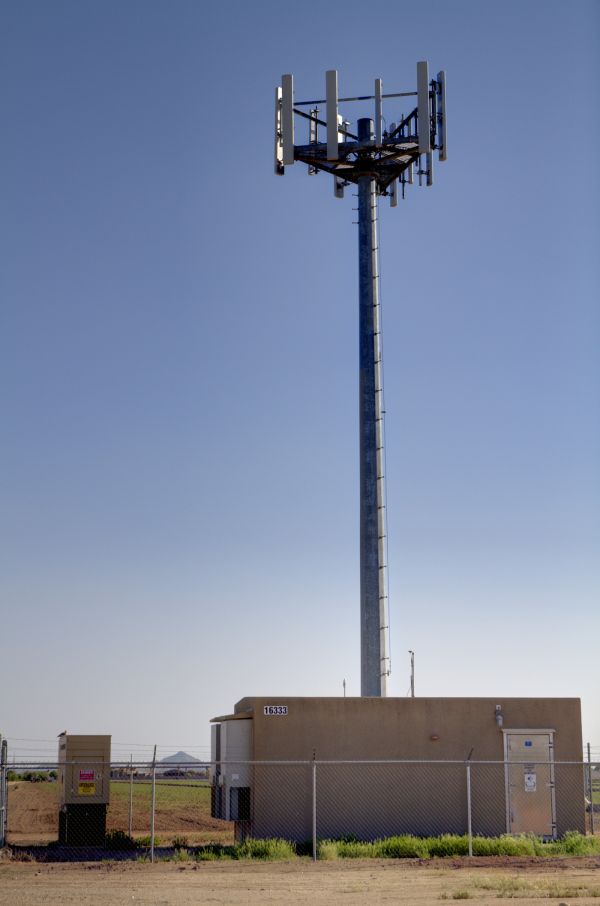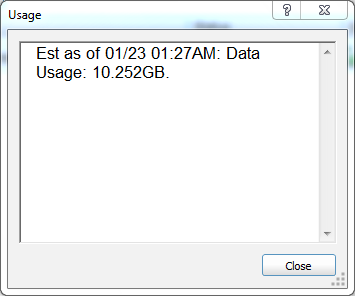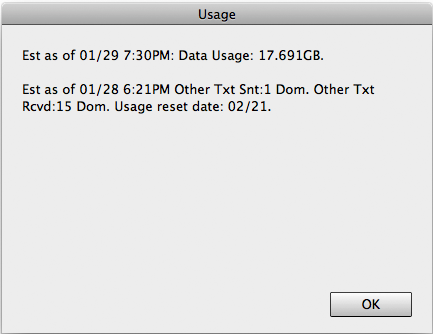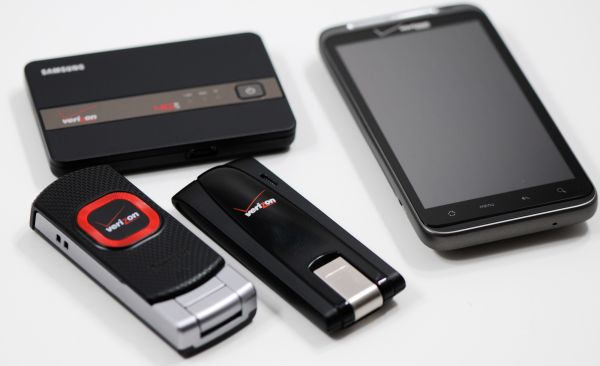Verizon 4G LTE: Two Datacards and a WiFi Hotspot Massively Reviewed
by Brian Klug on April 27, 2011 12:11 AM EST- Posted in
- Smartphones
- Samsung
- Verizon
- LTE
- 4G
- Pantech UML290
- USB551L
- Mobile
- MDM9600
Conclusion and Final Thoughts
We've been over a lot throughout the course of this review, but there's still so much more to be said about both LTE and the intricacies of Verizon's implementation. We're going to be doing a larger and more educational anthology piece later in the summer as well. Further, we'll no doubt give the same treatment to other carriers launching new LTE networks and faster HSPA+ ones.

A photo of a Verizon 4G LTE eNodeB in a field. Longer antennas on the tower are for 700MHz LTE.
The end result of all this testing over the course of literally months is that I'm insanely jealous of everyone in a market with 4G LTE already turned on. I've driven back and forth countless times, and each time I've grown a bit more spoiled with just how fast LTE is.
The performance picture is equally clear. Worst case speeds on LTE are about as slow as EVDO is fast, around 1.5-2Mbps. When you're in a good coverage area and have good SINR, the speeds are easily an order of magnitude faster, just as advertised. That's definitely a generational improvement, and things will only get faster once we get category four modems and higher 4x4 MIMO enabled with category 5. Again current implementations are category 3 and 2x2. The next round of things to look for will be second generation LTE modems which will bring both improved performance (MDM9625, category 4) and reduced power profile (MDM9615).
The other part of the picture is how Verizon's LTE deployment will stack up against other carriers' planned deployments. Verizon is in an extremely competitive position thanks to its nationwide upper C block license that grants it 22MHz of 700MHz spectrum everywhere in the US. In a number of markets, it also has lower A and B block licenses, giving it even more spectrum to deploy more channels when capacity starts picking up. That means Verizon has up to 34 or even 46MHz of 700MHz spectrum to play around with. AT&T on the other hand has a sprinkling of lower block B and C licenses that are both 12MHz. AT&T also purchased Qualcomm's licenses to blocks D and E, which are both 6MHz unpaired, though it's not entirely clear how AT&T will integrate both blocks of unpaired spectrum. All total that gives AT&T between 12 and 36MHz of 700MHz spectrum depending on market. That's really the moral of the story here—performance and coverage are going to vary greatly depending on what licenses each carrier has in your market.
The next part of the story are the launch devices themselves and pricing. 4G LTE data cards and hotspots on Verizon come with a data allowance of either 5 or 10GB, for $50 and $80 a month, respectively. Go over those data caps, and you'll be billed $10/GB. I found it shockingly easy to burn through massive amounts of data on every LTE card—I ate up 10GB testing the Pantech UML290 on a weekend, and then over 17GB later on. Don't even ask about the Samsung hotspot. I shudder when I think about the bills I would incur were these devices in my pocket all the time.
As of this writing, the HTC Thunderbolt gets you "unlimited" LTE data for $29.99/month, though a 5GB soft cap no doubt applies. It's also confusing to me that maximum allowed user caps are still applied to LTE WiFi hotspots, and even more puzzling is the fact that five is the number of users when the Thunderbolt allows eight, and the Droid Charge a rumored ten.
I guess that brings me to to the WiFi hotspot situation. Until the hotspots have 5GHz ISM band support for WiFi, I cannot do without hotspot-as-modem functionality. The situation at conferences is extreme, and continuing to deploy devices that set up reasonably powerful 2.4GHz WiFi APs for a few nearby devices only exacerbates the problem. Deploy all of this into the 5GHz band with its greater number of nonoverlapping channels and everyone will be able to breathe easier—for at least another couple of years until that too becomes saturated.
Both data cards function perfectly on Windows, but OS X stability needs major amounts of work. The irony of the situation is that the newer USB551L with OS X support marked on the box in my testing was considerably less stable than the older Pantech UML290. Firmware updates and an update coming to the VZAccess Manager software should fix these stability problems.
For that reason, probably the best way to get on LTE right now is either through the Thunderbolt or one of the LTE WiFi hotspots. The Samsung SCH-LC11 was consistently stable and clung to 4G LTE impressively well, where the data cards require an occasional disconnect and reconnect.
If you made it this far, I hope you gained something from this article. Looking at the evolution of the PC, high speed internet access went hand in hand with improvements in processing power. The smartphone industry has seen a tremendous amount of improvement in CPU and GPU power over the past three years and it looks like LTE will be sufficient to support that trend for the foreseeable future.













32 Comments
View All Comments
OctavioShaffer - Tuesday, November 13, 2018 - link
this very informative, i can now open my vpn server, through my Ip address 192.168.1.1. because recently i spend days just to search a to fix my problem. Thanks alot!strikeback03 - Wednesday, April 27, 2011 - link
I live in an LTE market and would be happy to accept some LTE devices if you don't want to be driving to Phoenix ;)For that matter I also have a Droid X with the stock 2.2 build.
Playing with a Thunderbolt at a Verizon store the data speeds are really quick. Will be interesting to see how much they drop off though with more users.
Penti - Wednesday, April 27, 2011 - link
They use 20MHz in 2.6GHz here in Sweden (few cities so far) so you can actually see speeds up to about 80 Mbits here, LTE-Adv on 800MHz is in the works of being deployed here now, but they will be using 10MHz spectrum. I'm guessing people in major cities will see 20-80Mbits and people in areas only covered by 800MHz will see 10-40Mbits. Latency is where it clearly matters though. Though 50 Mbits on 2x10MHz 700MHz is clearly at the top. It's not often you will see much of high speeds any way.To bad they pretty much price themselves out of the market though. A 16Mbit Turbo3G connection is less then half of what 4G costs here. For limitless traffic at least.
xp3nd4bl3 - Wednesday, April 27, 2011 - link
Love the graphing.mars2k - Wednesday, April 27, 2011 - link
Not good, I need USB tethering. This is a deal breaker for me. I need outside access in several places where wi fi is not allowed.Lord 666 - Wednesday, April 27, 2011 - link
Brian,Currently have an open ticket with VZW about the lack of public addresses. Have several LTE cards used with cradlepoints that are used for DMVPN backup connections and need public addresses. In testing, would randomly get nat'd address bring up a complete tunnel, but it was very rare. All of the IPs issued were 10.xxx in NYC.
Was told static public IPs will be available around May.
nerdydesi - Wednesday, April 27, 2011 - link
I'm curious on what you meant by this."Note that the Thunderbolt is a 2x1 device while the others are 2x2, which explains some of the upstream throughput distribution difference"
Do you mean that the other devices have more antennas than the Thunderbolt and thus why their speeds seemed to be faster than the Thunderbolt? Regarding the phone and its "unlimited data", I used 30gb in my last billing cycle and so far 70gb now with no peep from Verizon. It could also be that I'm currently a VZW employee. I hope that because I bought the phone, I can be grandfathered into the plan.
Also as a note, if you take the sim card from the Thunderbolt with its full voice and data plan and put that into a mifi or USB modem, you get the unlimited data as well. Just keep in mind you pay more per month due to having the voice along with it (which is useless on the modem devices), but still better than the current 5gb and 10gb caps. If you do vice versa, take the card from a modem to an LTE phone, you are charged for each minute of voice and each text unless you change your plan.
DanNeely - Wednesday, April 27, 2011 - link
" AT&T on the other hand has a sprinkling of lower block B and C licenses that are both 12MHz. AT&T also purchased Qualcomm's licenses to blocks D and E, which are both 6MHz unpaired, though it's not entirely clear how AT&T will integrate both blocks of unpaired spectrum. All total that gives AT&T between 24 and 36MHz of 700MHz spectrum, again depending on market."Since the only blocks that they own nationwide are the 6mhz D and E blocks shouldn't it be 12 to 36mhz of spectrum. Looking at auction maps it appears there're fairly large areas where ATT didn't win the A or the B blocks.
http://www.cellularmaps.com/700_auction.shtml
Brian Klug - Thursday, April 28, 2011 - link
That's a good point. If they can manage to either TDD or FDD both of those it should be 12 to 36. Just don't forget about the lower C block which was involved prior to this latest auction, that's the 24 that I'm thinking of.With 12 MHz of spectrum they can run 5 MHz FDD channels which really won't be much faster than current WCDMA systems. I guess that's why I mentally discounted it.
-Brian
Lothsahn - Wednesday, April 27, 2011 - link
I notice that with my Sprint aircard, I maintain the 3G connection even during extended trips across the nation. However, the 4G connection on the same aircard appears to be unable to handoff and loses its connection while traveling constantly. I find that my connection disconnects every 2-3 minutes when actually moving. However, if I'm stationary in a building, it'll maintain the connection for hours.What results did you have with LTE for these sorts of usage scenarios?